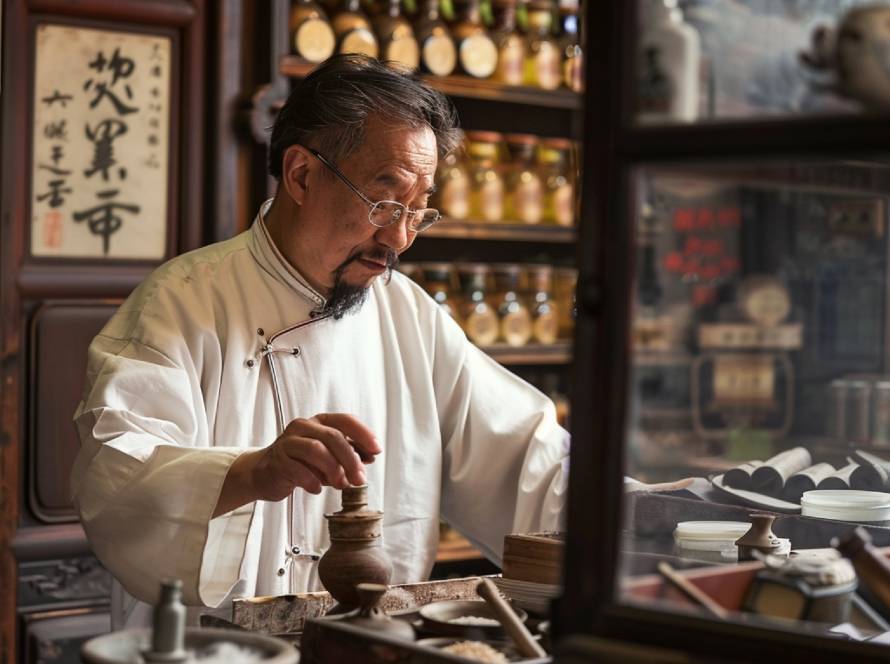TREATING SEASONAL ALLERGIES WITH TRADITIONAL CHINESE MEDICINE
As an allergy sufferer with 30 years of experience, I can say that being allergic is not the most pleasant thing in this world.
While your friends enjoy outdoors, you sit at home with the windows closed, and your best friend is a tissue, the size of a California King sheet.
At the age of 10, due to an overdose of antibiotics, I developed allergies to everything that grows, lives, and moves.
After moving to California, I lived like a normal person for 2 years, enjoying life and thinking that it had all passed, but then it hit me even harder. It turned out that I had developed allergies not only to wormwood and lilac, common in the central region of Russia, but also to citrus flowers, olives, cacti, and even (oh, horror!) local cockroaches.
Resigned to my fate, I started taking antihistamines, which gradually turned me into a drowsy, clueless, zombie.
Studying Eastern Medicine completely changed my life and everything I knew about allergies. If official medicine relieves symptoms with medications, Eastern Medicine views the body as a whole system, and treatment is aimed at the cause, not just the symptoms.
The main approaches to treating allergic diseases in Eastern Medicine include:
-Сleansing (detox) the body of accumulated harmful substances. For this, herbal supplements and vacuum cupping massage techniques are used, which stimulate blood circulation and lymph flow, facilitating the rapid elimination of toxins.
-Acupuncture (necessary for restoring normal lung function and all internal organs and regulating psychosomatics: yes, our immune system problems stem from early childhood).
-Herbal formulas.
During my studies in Chinese Herbolagy, I made an important discovery. I noticed that after prolonged use of one of the immune-support formulas, my allergic rhinitis attacks in the spring noticeably reduced. Having studied this formula more closely, I understood the reason. It not only increases the level of T-lymphocytes to protect against various harmful viruses but also acts as a natural antihistamine and suppresses the inflammatory process.
Like most herbs, this formula works gradually, and you need to take it for a long time. It took me about 4 months to see the results. The name of this elixir is YU PING FENG “JADE WINDSCREEN.” In Chinese, the words ping feng mean a screen that usually protects the interior part of the room from the wind. It is also the name of the root of Saposhnikovia, included in this formula (Fang Feng). In the Qing dynasty era (1600-1900 AD), it was considered as precious and useful as jade, hence the name of the formula.
Clinical indications for use:
- Frequent cold and flu diseases
- Fear of drafts
- Weak immune system
- Spontaneous sweating
- This formula often used for the prevention of cold diseases in children (by a long course of up to two months).
Pharmacological action:
- Antibacterial
- Antiviral
- Anti-inflammatory
- Antihistamine
- Strengthens immunity
- Stimulates adrenal gland function.
Clinical indications: Residual effects after a cold, flu with profuse sweating, susceptibility to colds and viral infections, chronic bronchitis, bronchial asthma (as an adjunctive medication), chronic cough, allergic rhinitis, including in children.
Composition: Astragalus root prepared with honey (Mi Zhi Huang Qi) Rhizome of large-headed atractylodes (Bai Zhu) Atractylodis macrocephalae Rhizoma Root of Saposhnikovia (Fang Feng) Saposhnikoviae Radix.
You can purchase this formula at our clinic. It is available in tablet form, tincture, tea, or as a herbal kit, from which you can prepare either a tincture or a tea decoction.
AND MOST IMPORTANTLY – AVOID THE CONSUMPTION OF DAIRY PRODUCTS (ESPECIALLY CHEESE AND ICE CREAM) AND SWEETS DURING TREATMENT. These products enhance the inflammatory process.
Always consult Herbalist or TCM Doctor before taking herbal preparations to avoid side effects and incompatibility with medications.




